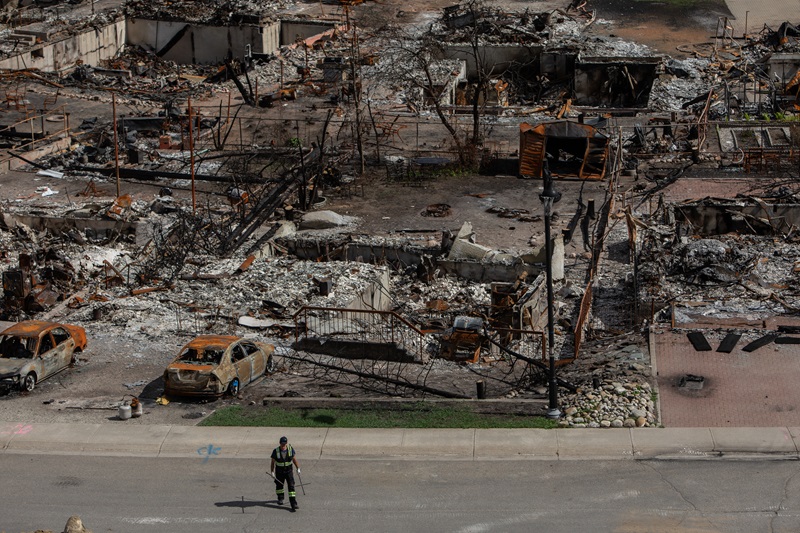Will reinsurance capacity be stable in Canada after record-breaking NatCat losses?

Though 2024’s reinsurance renewal season started off stable compared to 2023, this summer’s record-breaking insured losses from four major Nat Cats will undoubtedly see growth in Canadian carriers’ reinsurance demand.
But reinsurance supply may not grow commensurately, experts tell Canadian Underwriter.
Beyond Canada, global insured Cat losses could be the factor that makes or breaks renewals.
“Higher demand for property reinsurance, especially in areas with intensifying natural catastrophe risks, driven by higher property values, urbanization and rising repair costs due to inflation, is something that we have been witnessing and expect to continue to see,” says Jolee Crosby, Swiss Re’s Canada and English Caribbean CEO.
“We expect this will continue to drive demand for more reinsurance and we don’t see signs of a large increase in supply.”
In Canada, 2024 was the third consecutive year insured losses topped $3 billion. Losses peaked this year at $7.6 billion and counting. That’s a national record for the highest insurance losses tallied from natural catastrophes.
That said, reinsurers will be looking to diversify their risk to the global market. But is that enough to keep renewals steady?
“When we think about reinsurance, the Canadian market might be more difficult, but it depends a bit on what happens with the rest of the world, because reinsurance companies are trying to spread their risk around,” says Bill Premdas, executive director for KPMG’s P&C actuarial practice.
“If it’s a bad year in Canada, maybe it’s not a bad year in other parts of the world.”
But this year, Canada’s not the only country experiencing rising NatCat risk. In the first half of 2024, global insured losses reached US$60 billion — 62% above the ten-year average, according to Swiss Re Institute. And 2023 was the fourth consecutive year with global insured losses from natural catastrophes above US$100 billion.
Until Q3 results are released, however, the Canadian market will be waiting to see how much of these losses will be covered by reinsurance.
For Swiss Re, reinsurance coverage is tailored accordingly. “Recognizing that a high catastrophe year in Canada impacts different clients in different ways, we take a tailored approach versus a one size fits all,” says Crosby.
Already, two primary carriers say their losses have spiked from this summer’s stream of Cats.
At the end of August, Intact estimated its total catastrophe losses quarter-to-date at approximately $1.1 billion on a pre-tax basis and net of reinsurance.
And Definity estimated catastrophe losses would have “a negative impact on operating income of approximately $150 million net of reinsurance recoveries…net of taxes and reinsurance.”
The company said reinsurance recoveries include full utilization of the $25 million available under the company’s catastrophe aggregate treaty.
A worker walks in a devastated neighbourhood in west Jasper, Alberta on Monday August 19, 2024. Wildfire caused evacuations and widespread damage in the National Park and Jasper townsite. THE CANADIAN PRESS/Amber Bracken







